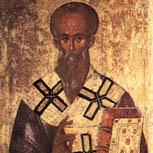Pope Leo XIV – Inaugural Mass Homily
Elected on May 8, 2025, as the 267th successor of St. Peter, Pope Leo XIV’...

St. Clement was the bishop of Rome and third in succession from St. Peter. Around the year 95 AD, a letter was written by the Church of Rome to the Church at Corinth. Its goal was to reconcile factions that had developed in Corinth and restore unity and brotherly love through humility and reconciliation. This document, attributed to St. Clement, is the earliest Christian writing besides the New Testament documents. In fact, the Gospel of John is likely written around the same time as this letter. This “first letter of Clement” (a second letter was falsely attributed to him) was favorably received by the Corinthian Church, copied by them, and circulated all over the empire. This letter was then, in a sense, the very first papal “encyclical” (circular letter). It was so highly regarded by the universal church that for several centuries the Church in Egypt and elsewhere regarded it as one of the New Testament scriptures. The Church of St. Clement is one of the most fascinating places in Rome. Excavations revealed that the medieval Church, built in the 12th century, actually was built on top of a 4th century Church which was in turn built over a house church going back to the first century. It is very possible that this house-church, where Christians of the late first century met for worship, was the home of St. Clement himself. Clement is not only regarded as one of the Fathers of the Church, but because his life overlapped the lives of several of the apostles, he is known as one of the “apostolic fathers.” For more on Clement of Rome and his First Letter, see When the Church was Young: Voices of the Early Fathers. Biography by Dr. Italy